#fossilised shell
Explore tagged Tumblr posts
Photo

8.5" Bredyia crassornata Ammonite Fossil – Inferior Oolite, Jurassic Coast, Burton Bradstock, Dorset UK – Genuine with COA
This exceptional 8.5" specimen of Bredyia crassornata is a striking ammonite fossil from the world-renowned Jurassic Coast, specifically collected from the Inferior Oolite strata at Burton Bradstock, Dorset, UK. It represents a fine example of Jurassic marine life and is an extraordinary addition to any fossil collection.
Bredyia crassornata is a large ammonite species notable for its robust, coarsely ribbed shell and strong ornamentation. The shell features thick radial ribs, a rounded whorl section, and a distinct zigzag suture pattern. This species is characteristic of the Middle Jurassic period, falling within the Aalenian stage.
Geological Details:
Species: Bredyia crassornata
Geological Formation: Inferior Oolite
Age: Middle Jurassic (Aalenian Stage)
Location: Burton Bradstock, Dorset, UK
Depositional Environment: Shallow marine shelf – oolitic limestone rich in ammonite fauna
Family: Graphoceratidae
Superfamily: Hildoceratoidea
Order: Ammonitida
This specimen was professionally discovered and excavated on the 17th of January 2025 by our dedicated team members, Alister and Alison. It has been meticulously cleaned, prepared, and stabilised by Alison to preserve its exceptional features.
Why Buy This Fossil?
100% genuine ammonite fossil
Sourced directly from the Jurassic Coast
Includes Certificate of Authenticity
Actual specimen photographed – what you see is what you get
Professionally prepared and preserved
Scale cube = 1cm for accurate sizing (please see photo)
Whether you're a collector, educator, or fossil enthusiast, this Bredyia crassornata ammonite makes a fascinating display and conversation piece.
All of our Fossils are 100% Genuine Specimens & come with a Certificate of Authenticity.
#Bredyia crassornata#ammonite fossil#Jurassic fossil#Inferior Oolite#fossil Dorset#Jurassic Coast fossil#Burton Bradstock ammonite#genuine ammonite#UK fossil#collectible fossil#fossil specimen#fossil shell#ammonite display#Jurassic ammonite#fossilised shell#ammonite UK
0 notes
Text
What is a Rock?
Hey folks!
Before we get started with sharing our full survey notes, we thought it would be a good idea to go over some basic terminology to ensure we're all on the same page!
What is a Rock?
No, seriously! What counts as a “rock”? Geologically speaking, a rock is a solid, naturally-occurring collection of minerals. It might be made of a single mineral type, or multiple, but it is an aggregate of many individual mineral crystals that are interlocked together.

Fig. 1: An image of a coarse-grained granite showing individual crystals of feldspar, mica and quartz. Note that the entire rock is made up of these interlocking crystals.
What is a Mineral?
Okay, so we know what a rock is now - it's made up of minerals. But, what is a mineral? A mineral is a building component of rocks, and they have a very specific definition based on particular criteria that must be met. For something to be considered a mineral, it must meet all the following criteria:-
It must be solid
It must be naturally-occurring
It must be inorganic
It must have a definite and known chemical composition
It must have a defined crystal structure
What does this actually mean? Let’s walk through it. Criterion one discounts anything that is a liquid - such as water. As you know, rocks and minerals can become liquid when exposed to high temperatures, magma and lava for example, but in this form, they are not minerals, and therefore not rocks! They can only be classed as minerals once they solidify, provided they meet the other criteria alongside.

Fig. 2: Image of lava (a non-mineral due to its liquid form) and basalt (a fine grained, igneous rock, and the solidified form of many low viscosity lava flows).
As for the other criteria, naturally-occurring and inorganic are self-explanatory. No crystals that can only be manufactured in a laboratory setting are true minerals, because they cannot exist in nature! Crystals that are commonly lab-grown but can exist in nature (such as moissanite) still count as minerals. Inorganic means the mineral can be formed by inorganic processes. Something like calcite can be produced by animals (such as clam shells) but can also be formed by geological processes without the involvement of any living thing. This actually discounts amber as a mineral - since it is tree resin (formed organically) and is not replaced by any other minerals as is the case with fossilisation - therefore amber is not a mineral!
Having a definite chemical composition is also pretty much what it sounds like - it needs to have a chemical formula - a sequence of elements organized to form a compound that we know the definite composition of. For example, the chemical composition of quartz is SiO₂, which means it is a compound made up of atoms of silica and oxygen. Similarly, the composition of potassium feldspar - KAlSi₃O₈ is made up of potassium, aluminium, silica and oxygen atoms. When dealing with specific types of rocks, such as fine grained igneous specimens, the fine grain size of the individual crystals often makes it impractical to determine rock type via crystal analysis alone, so some geologists will use chemical analysis to aid in this - hence why it's important to know the definite chemical composition of your specimens!
Lastly, a mineral must have a crystal structure - but what is a crystal structure? The simplest way to imagine this is with building blocks. Each block is the unit that defines the chemical composition - for example, SiO₄ for quartz. So, one “block” of quartz will be a unit of SiO₄. By arranging these blocks in a repeating pattern, a larger structure begins to take form. Crystals are naturally orderly structures - imagine the blocks are piled nicely on top of each other, this is why many crystals have such well defined shapes!

Fig. 3: Diagram showing the atomic "building block" structure of quartz using a 3D model and ball-and-stick diagram; diagram showing "building blocks" arranged in the natural crystal structure; image of a quartz crystal - note the same crystal structure!
Something like glass, or a naturally-occurring glass, like obsidian, has these blocks arranged randomly, like if you were to take your tower and throw it into a storage bin. Because obsidian lacks this order on an atomic level, it isn’t considered a true mineral!

Fig. 4: Image showing a fragment of obsidian. Note the conchoidal fracturing on the obsidian - this is caused by the lack of organisation in its structure. The disorganised nature of natural glass and obsidian exclude them from being a true crystal, and therefore they are also not considered true minerals.
Unfortunately, we aren’t going to be able to run any chemical analyses in Outer Wilds, but we’ll do our best to compare what we see to real-world rocks, minerals, and features, and hopefully this will be able to steer us in the correct direction regarding some of these criteria to ensure we are making the most scientifically informed analyses possible!
What is a Fossil?
Now, we just said that minerals and rocks can’t be organic, and you’re probably thinking, well hold on a second, what about fossils? How can something that was organic become inorganic, and then a rock?
Let’s start by defining what a fossil actually is. Fossils are described as “any preserved remains, or trace of a once-living thing from a past geological age.” This includes anything from the fossilised skeletons of dinosaurs, to the delicate imprints of leaves and plants. Now, it’s important to note that not all fossils are rocks. Objects preserved in amber, for example, are classed as fossils - but as they remain organic they cannot be classed as a rock.
How do we go from something organic, like a bone, to an inorganic version of it? Probably the most well known form of fossilisation is via replacement - where organic remains are replaced by inorganic minerals. Most bones are made up of calcium phosphate and other organic materials. When an animal dies and is buried by sediment, these organic materials are replaced by inorganic crystals in a process known as permineralisation. Permineralisation occurs when the pores of the original specimen are infilled with mineral matter from the ground or water - which then, bit by bit, replace the original organics with minerals, eventually completely replacing the whole specimen! When this occurs, you no longer have your original animal bone, but instead a replica of it with a completely inorganic composition - a fossil! The minerals involved in replacement can vary widely, which can produce spectacular finds such as these pyritised ammonites, or opalised vertebrae!

Fig. 5: Fossilised remains of two opalised Iguanodon vertebrae; a pyritised Ammonite.
Other fossils, such as footprints and burrows provide a record of an organism’s life, as opposed to actual remains of the organism itself. These fossils are known as trace fossils and are normally impressions that have been made in soft mud/soil that has then lithified. The cool thing about trace fossils, and especially footprints, is that you’re left with a cast of whatever part of the creature made contact with the substrate - sometimes with incredible detail of footpads, claws, and/or skin. Other trace fossils include things like coprolites, gizzard stones, and nests! A trace fossil is also completely inorganic, as it’s simply an imprint of a creature, or something a creature left behind, and as such, technically classes as a rock!

Fig. 6: Photograph showing a dinosaur footprint mould and a dinosaur footprint cast. Both of these are trace fossils and have been formed via sediment infilling and lithification.
Alright, there was a lot of information there, but hopefully it has provided you with a strong foundation and understanding of what classes as a true rock! In our next post, we will be diving into the different rock types and the funky structures and features that they can create!
Hopefully, you’ll soon be able to start identifying a variety of rocks in your own Outer Wilds adventures!
If you have any questions regarding what we have talked about here, or indeed just about the Outer Wilds Geological Survey in general, please don't hesitate to drop us an ask!
Catch you in the next loop! The OWGS Team
71 notes
·
View notes
Text



Recent shell finds. One had a perfect natural hole for a necklace, so I made it into one.
The second is a shell stuck in some fossilised coral and the third are rock oysters.
#shell necklace#beach combing#mermaid#mermaidcore#mermaids#beachcore#merman#mermen#oceancore#piratecore#seacore#siren#shells#sea life#sea#ocean aesthetic
16 notes
·
View notes
Text
New stock photo pack! This is a bundle of 26 macro seashell photos, all royalty free and non-exclusive. These are available for any use, with no time restrictions or limitations.
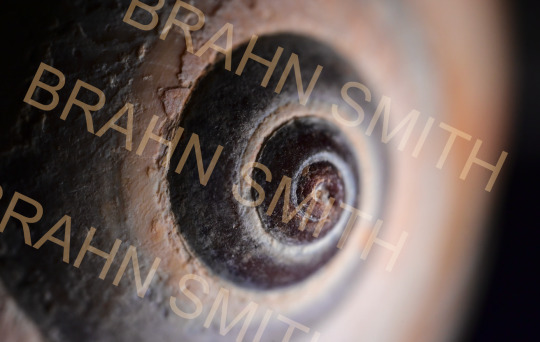


#stock photos#sea shells#shells#macro photography#stock photo bundle#ocean#beach#oceancore#macrophotography#photography#photo set#photo reference
13 notes
·
View notes
Note
Will there be something like fossils or something similar?
Hi there! I think I am planning a fun little gimmick for fossils? I like the idea of having to collect fossilised shells in rivers or on the seaside?
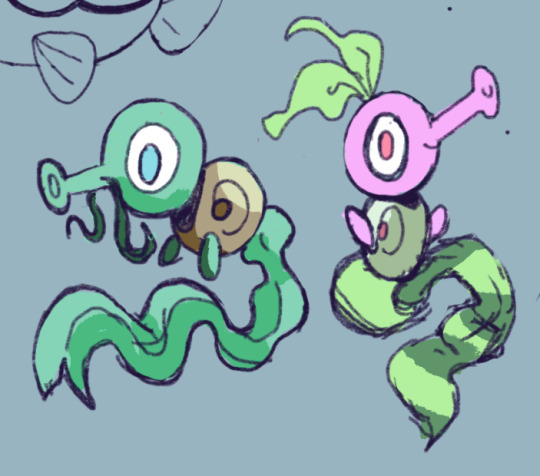
Sort of seahorse fossils with seaweed mixed in :)
31 notes
·
View notes
Text
What Are Opalised Fossils and How Do They Form?

In the heart of Australia’s red desert landscapes lies one of the most extraordinary natural wonders—opalised fossils. These breathtaking relics are far more than just beautiful gemstones; they’re prehistoric remains preserved and transformed by nature over millions of years. But what exactly are opalized fossils, and how do they form? Let’s explore the stunning fusion of geology, paleontology, and gemology.
What Are Opalised Fossils?
Opalized fossils are the fossilized remains of ancient organisms—such as marine shells, plants, and even dinosaurs—that have been replaced or encased by precious opal, Australia’s national gemstone. This unique transformation occurs when silica-rich water seeps into cavities left by decaying organic material, gradually forming opal in its place.
These rare treasures capture not only the structure of ancient life forms but also the vibrant play of color that makes opal one of the most visually captivating gems on Earth.
Where Are They Found?

The vast majority of the world’s opalized fossils are found in Australia, particularly in regions such as Coober Pedy opal, Lightning Ridge, and White Cliffs. These areas were once covered by the Great Inland Sea, a prehistoric ocean that existed over 100 million years ago.
As marine life flourished in this ancient sea, their remains settled into sedimentary layers. Over millions of years, geological processes transformed the surrounding environment, replacing some of these remains with opal.
How Do Opalised Fossils Form?
The process of localisation is both slow and complex, requiring specific environmental conditions:
Organic Burial: An organism, such as a mollusk, fish, or plant, dies and is quickly buried under sediment.
Decay and Void Formation: Over time, the organic material decays, leaving behind a cavity or imprint.
Silica-Rich Water Infiltration: Water-carrying dissolved silica seeps into these cavities.
Opal Formation: Under the right pressure and conditions, the silica settles and solidifies into opal, capturing the shape of the original fossil.
This rare geological phenomenon requires just the right mix of time, water, minerals, and luck. That’s why opalized fossils are so rare and prized—both scientifically and commercially.
Types of Opalised Fossils Discovered
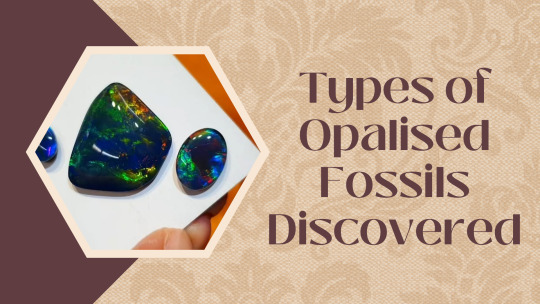
Some of the most incredible opalized fossil discoveries include:
Belemnites (ancient squid-like creatures)
Shells and marine creatures
Prehistoric fish bones
Tooth and jaw fragments
Even opalized dinosaur bones, including parts of species like the Weewarrasaurus—Australia’s very own opal dinosaur!
Each specimen is a one-of-a-kind blend of science and art, often displayed in museums or sold to collectors and gem lovers around the world.
Why Opalised Fossils Are So Valuable
The value of opalized fossils lies not only in their aesthetic beauty but also in their scientific importance. They offer a rare glimpse into ancient ecosystems, while also showcasing nature’s ability to create something stunning from something lost. For gem collectors, opalized fossils represent a perfect union of color, rarity, and history.
Moreover, because they are found almost exclusively in Australia, they have become icons of national pride and a symbol of the country’s rich natural heritage.
You can also watch: Video 12 Opal Fossils
youtube
Conclusion
Opalised fossils are more than just beautiful stones; they are stories from deep time—fossilised echoes of life, preserved in one of nature’s most dazzling minerals. Their formation is a result of remarkable geological processes that occurred over tens of millions of years, making each piece a timeless relic that bridges science, history, and natural art.So, whether you’re a gem enthusiast, a fossil collector, or simply someone fascinated by Earth’s wonders, opalised fossils are truly a marvel worth discovering.
2 notes
·
View notes
Text
lil guys of the Ediacaran
the Ediacaran period was around ~635 million years ago, happening before the Cambrian. This time saw the rise of the first group of animals and the oldest multicellular life. The fossil record is sparse due to the fact that the creatures did not have hard shells, which are the thing most easily fossilised.
the Ediacaran biota appeared ~570 million years ago, and are very taxonomically ambiguous, they may relate to some groups, like cnidaria and protozoans, but some have suggested completely new phylums that we do not have today.
the majority of Ediacaran biota were sessile (lacking the ability to move by themselves) and were soft-bodied. many also lacked mouths and a gut.
here are some lil guys!

These frondose fossils are very controversial, considering they appear to be leafy plants, but may very well be anything from animal or protist, to stem fungi (https://www.science.org/doi/10.1126/science.1099727)
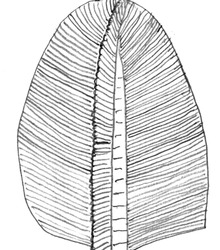
this is an Erniettamorph and we know basically nothing about these! The fossils were found in places where photosynthesis would not have been possible, and one type of these fossils has been found with the tubes completely covered and filled with sand, which makes the possibility of osmotic feeding from the surrounding water difficult as it would reduce the metabolically active volume. (https://www.pnas.org/doi/full/10.1073/pnas.0904836106)

Dickinsonia is a more studied animal. and it probably was an animal, due to cholesterol molecules found in fossils. Fossils range from millimetres to ~1.4 metres, and have near bilateral symmetry and rib-like segments. They were a mobile creature and ate microbial mats (trace fossils have been found which are most likely impressions from feeding) (https://doi.org/10.1017/S175569102300004X) A study from 2022 has suggested that they temporarily stuck themselves to substrate with mucus, which suggests a life in shallow waters (https://doi.org/10.1017/S0016756821000194)
support me on ko-fi?
#some of these articles are not freely available#so i might get the pdfs for people and drop them in a google drive if people would like#marine biology#ediacaran period#eddie in the ocean#dickinsonia#erniettamorph#frondose#fossils#paleontology#im on a paleo posting spree because this is what we r doing in lectures#i think ive had one singular lecture about modern animals (it was a cephalopods one)#oh wait no i had one on cnidaria and porifera ignore me#queue are in the ocean
49 notes
·
View notes
Text
I cleaned my rocks and fossils:
Cool rocks

Tiny shells

Bigger shells

Sparky rocks


Shell fossils

Rock with fossilised shells




9 notes
·
View notes
Text

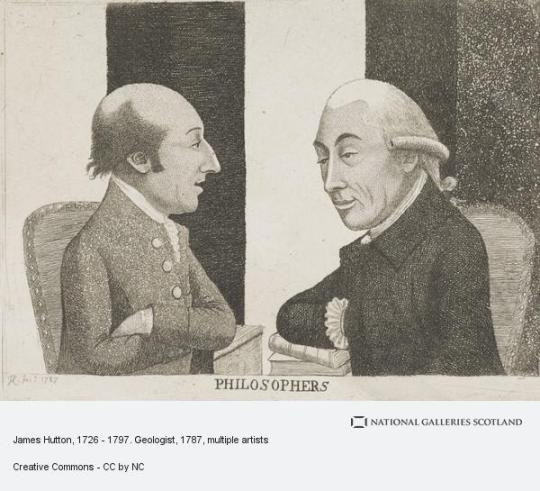
On 26th March 1797, James Hutton, the Scottish chemist and geologist, died.
Farmer and naturalist James Hutton is credited with being the founder of modern geology. The first to determine that the Earth is millions of years old, Hutton believed our planet is continually being formed. James Hutton was born in Edinburgh in 1726. He went on to study medicine and chemistry at Edinburgh University, and in Paris and Leiden. He took his degree in 1749.
In 1750 he returned to Edinburgh and resumed chemical experiments with friend James Davie. Their work on the production of sal ammoniac – a salt used for dying and working with brass and tin – led to a profitable partnership. Hutton moved to Slighhouses, a lowland family farm, in the 1750s. He spent 14 years running the farm. This gave him an interest in how land changed with the forces of wind and rain.
In 1753 Hutton became interested in studying the surface of the earth. He went on to devote his scientific knowledge, powers of observation and philosophical mind to the newly-named subject of ‘geology’.
Hutton went on a geological tour of the north of Scotland with George Maxwell-Clerk (the great-grandfather of the famous physicist James ) in 1764. He let his farms to tenants in 1768 and returned to Edinburgh. Between 1767 and 1774 he was closely involved with the construction of the Forth and Clyde canal.
Travels in Britain and abroad, as well as a time farming in Berwickshire, gave Hutton the opportunity to observe different rocks. He was intrigued to find fossilised shells high above sea level, and puzzled over other geological features. Hutton’s thinking was then influenced by reading about Joseph Black’s experiments with heated limestone, and by the proof of the power of heat demonstrated by James Watt’s steam engines. Hutton began considering the centre of the Earth as a massive heat source, where continuous processes destroy and reform rocks — the 'uniformitarian’ theory of geology. That led to his belief that the Earth was millions of years old.
Other scientists and philosophers vehemently disagreed with him. Many of these were 'catastrophists’ who believed that changes in geology happened as a result of natural disasters such as volcanic eruptions or floods. The debate continued for several decades during the 19th century, until finally geologists became reconciled to Hutton’s theory.
In 1785 Hutton presented his findings to the newly formed Royal Society of Edinburgh. He died on 26 March 1797 and was buried in Greyfriars Kirkyard in Edinburgh in the part of the graveyard known as the “Covenanters Prison”
Five years after Hutton’s death, mathematician John Playfair published 'Illustrations of the Huttonian Theory of the Earth’. This volume contained a summary of Hutton’s 'Theory of the Earth’ alongside numerous additional illustrations and arguments.
In a poll, James Hutton was voted the seventh most popular Scottish scientist from the past. It is remarkable that men like Hutton , David Hume, Adam Smith, Dugald Stewart, Thomas Reid, and countless others all came out of Scotland in the same era, all within less than a hundred year period, their thoughts and works were spread throughout an ever growing world as part of the Scottish diaspora, the era became known as The Scottish Enlightenment.
Pics are of Hutton, the statue is on The Scottish Portrait Gallery in Edinburgh and the James Hutton Memorial Garden, which I have to admit have never visited, even though I have regularly taken a shortcut through Viewcraig Gardens, where it is situated.
8 notes
·
View notes
Text






Meep
Rocks in question: Moonstone (pink?), thulite, pink tourmaline, rainbow aura (metal coated quartz). And a fossilised shell
Albums:
Sacrament - Lamb of God
Ashes of the Wake - Lamb of God
12 notes
·
View notes
Photo

PROLEYMERIELLA Iridescent Fossil Ammonite with Mother of Pearl Shell, Lower Albian, Cretaceous: Mitsinjo, Madagascar
All of our Fossils are 100% Genuine Specimens and come with a Certificate of Authenticity.
Specimen: Proleymeriella Fossil Ammonite (with natural mother of pearl iridescence)
Age: Lower Albian, Cretaceous Period (approx. 113 to 100.5 million years ago)
Location: Mitsinjo, Madagascar
Scale cube = 1cm: Full sizing please see photo.
About the Fossil:
Proleymeriella is an extinct genus of ammonite, a type of marine mollusc that flourished during the Cretaceous period. This particular specimen originates from Mitsinjo, Madagascar, a region renowned for its beautifully preserved and naturally iridescent ammonites. The stunning mother of pearl shell preservation makes these fossils highly sought after by collectors and natural history enthusiasts.
Ammonites are among the most iconic and recognisable fossils, thanks to their distinct spiral-shaped shells. Despite their resemblance to modern-day nautilus, ammonites are more closely related to octopuses, squid, and cuttlefish. These marine creatures thrived in Earth's oceans between 240 and 65 million years ago before becoming extinct at the end of the Cretaceous period.
The beautiful rainbow-like sheen seen on this Proleymeriella ammonite is a result of the natural preservation of the original aragonite shell layer, creating a mother of pearl (nacreous) effect that shimmers under the light.
Geological Information:
Formation: Mitsinjo deposits, Madagascar
Age: Lower Albian, part of the Early Cretaceous Epoch
Environment: These ammonites lived in warm, shallow seas teeming with marine life, a rich ecosystem now preserved in the fossil record of Madagascar.
ACTUAL AS SEEN: The image shows the EXACT specimen you will receive. The fossil has been carefully hand-selected and professionally photographed to best represent its natural beauty.
Measurements are as accurate as possible; however, precise dimensions can be challenging to gauge due to the irregular shape of natural fossils. While we aim to portray colours as true to life as possible, variations can occur due to lighting conditions and device screen differences.
Once this specimen is sold, we will update the listing with a newly selected item, complete with new photographs and sizing.
Please Note:
If you have stored this item in your basket for a while, it remains available for others to purchase until checkout is complete.
We recommend saving or taking a screenshot of the item's photo at the time of purchase for your records.
We maintain records of every specimen photograph we upload.
#Proleymeriella fossil#iridescent ammonite#mother of pearl ammonite#Lower Albian fossil#Cretaceous fossil#Madagascan ammonite#Mitsinjo fossil#authentic ammonite#fossilised shell#Cretaceous ammonite#fossil collection#natural history#genuine fossil specimen#Jurassic marine fossils#ammonite display fossil#polished ammonite fossil#fossil shell Madagascar
0 notes
Text
Nautilus’ and Ammonites incredible ability to survive in low-oxygen climates (how some ammonite species survived the Permian extinction)
Some species of ammonites were able to survive the Permian Extinction (which killed around 90% of Earth’s species). How did they do this? Even the trilobites disappeared after their reign of about 300 million years! Well, why don’t I first explain what scientists hypothesize what might have caused the Permian Extinction. The pores of fossilised leaves suggest that carbon dioxide levels were high about 250 million years ago, following a colder period of time (the pores, or stomata, of leaves take in CO2 so fewer pores means more CO2 in the atmosphere and vice versa). A rapid and sudden drop in sea levels at the end of the Permian ruined shore and near-shore habitats which destabilized the climate. The death of the many inhabitants of those habitats cause mass decomposition. The process of decomposition causes carbon dioxide to be released which then causes a depletion of the available dissolved oxygen and global warming. Near the end of the Permian, there was also intense volcanic eruptions for a couple million years, causing an initial cold snap but then global warming and ozone depletion. The effect of these events cause the oceans to become incredibly anoxic, so most ocean creatures likely suffocated. Of course there are other possible occurrences that could have contributed to the mass extinction, but these are the main ones. Now, how did some ammonite species survive? Using nautilus’ scientists discovered that their shell can function like a Scuba tank. Nautilus’ can counter low oxygen environments by slowing down and lowering its chemical activity. The nautilus can also collect oxygen in its buoyancy chambers in which they then use the stored oxygen to breathe. Fossil evidence suggests the ammonites also had the ability to do this.
Source: In The Blink of an Eye by Andrew Parker
Image by Peter A. Austen
Nautilus (left) and artists depiction of the extinct ammonite (right)

#ammonite#nautilus#nautiloid#extinction#evolution#evolutionary biology#permian#permian extinction#mass extinction#aquatic animals#ancient animals#extinct animals#extinct species#science#palaeontology#cool facts#fun facts#interesting facts#interesting#life science#science facts
4 notes
·
View notes
Text
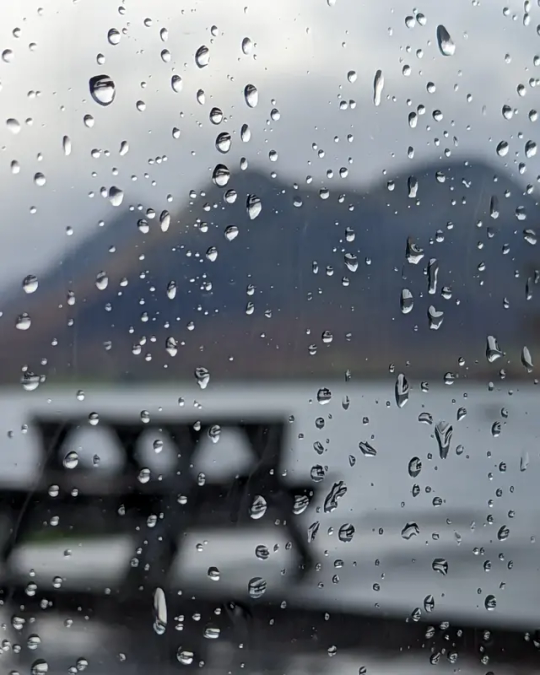
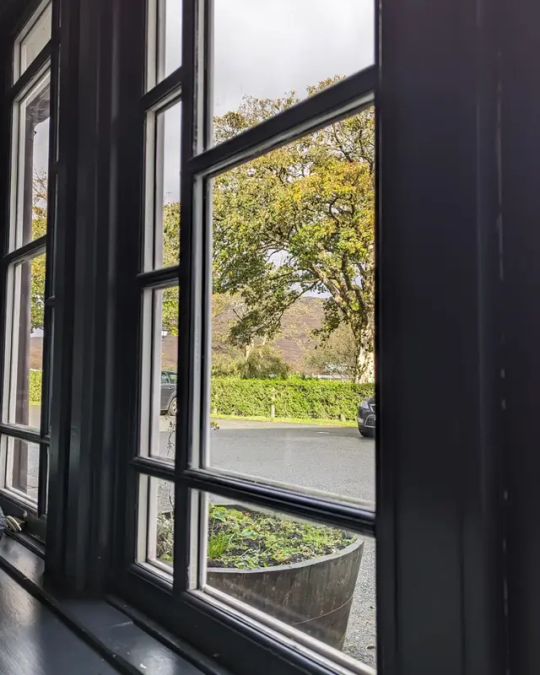

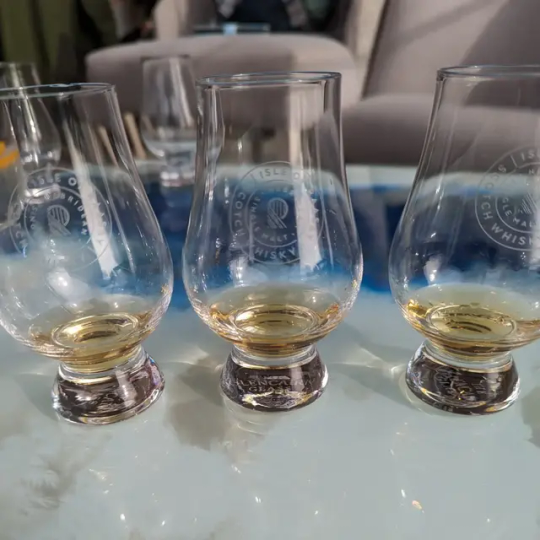

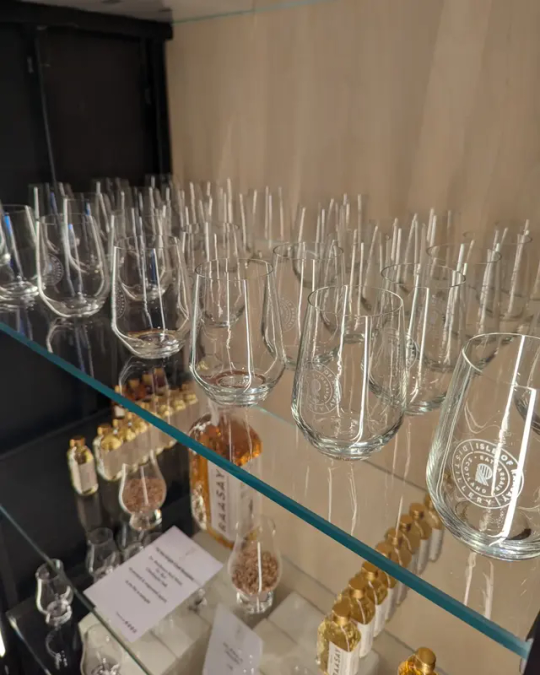
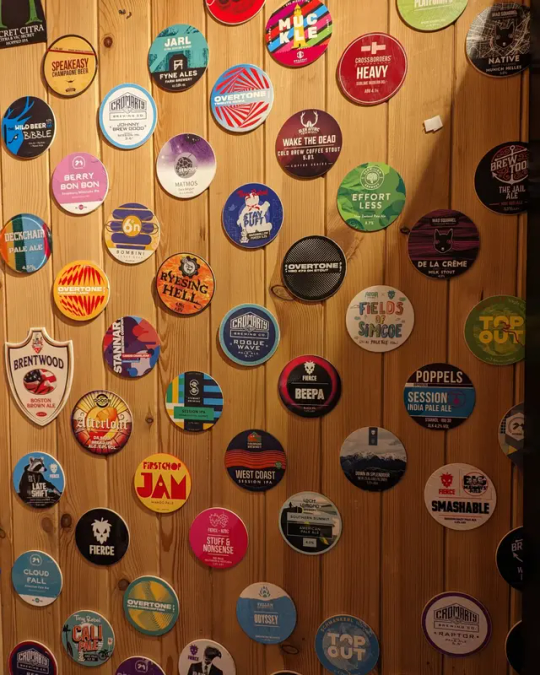
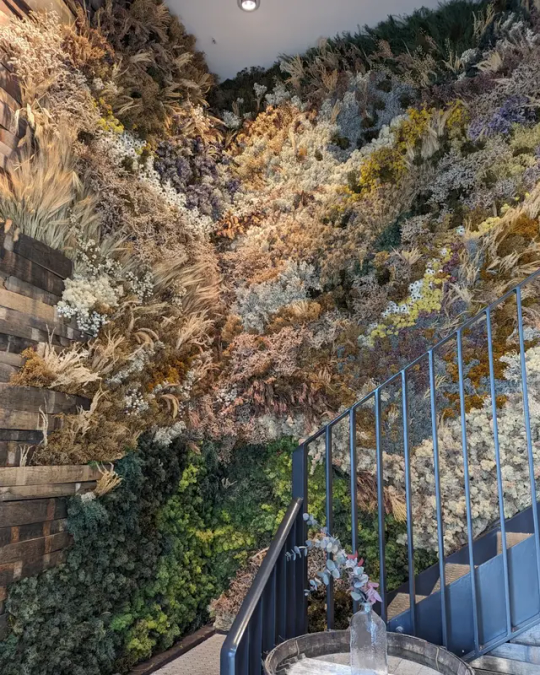

i was recently on the isle of skye for a week and these are my fave misc wee moments i took pictures of on my travels ✨
details for each pic below the cut
1. looking over to the isle of skye from the isle of raasay whisky distillery
2. the view from the pub, looking outside the sligachan hotel
3. lunch at the isle of raasay distillery - chicken bites with garlic mayo and a spiced pulled pork bao bun (i would leave my house rn to drive back up there to catch the ferry over in the morning for another one of those bao buns omg)
4. my whisky flight at the isle of raasay distillery - their signature single malt, a distillery exclusive whisky, and their slàinte club exclusive whisky for winning tourism destination of the year 2022 (cask strength baybeeee)
5. some nice decor in the distillery shop lol
6. a shelf of the dram glasses at the distillery
7. a wall of craft beer logos in an independent whisky shop
8. more decor from the distillery (!! big fan of this one)
9. a snapshot from the coral beach in claigan, dunvegan - there's no sand on this beach and it's technically not actually "coral", the beach consists of small shells and fossilised seaweed!!! called "maerl"!!! so cool
and one final pic to emphasise the wind on the ferry back from raasay. let's just say after more than a few whiskys combined w it blowing a hoolie, the phone was almost ripped out my hands on more than one occasion while taking a group selfie 💀

anyway i love this photo it's so candid and it's chaos and i had the BEST TIME
if u made it this far ily MWAH
4 notes
·
View notes
Text
CLASSIFIED DOSSIER – SHADOW WATCH
Authorised excerpt by LIN XIANG, extracted from Delta Mission – Section: BioStructure & Purpose
File recovered from encrypted node linked to: https://www.wattpad.com/1546905625-undisclosed-chapter-seven-invisible-bonds
Origin
A project developed by Specter Vault, under direct supervision of the Binary Parents. Not built. Synthesised — like a liver grown in a lab, cell by cell, tissue by tissue.
"She wasn't born. She was composed."
External Structure – Organic Armour
She wears a living shell. Overlapping plates shift like gills beneath the ocean’s skin. Each one built from biological matter, reinforced with synthesised organic carbon — forming an asymmetrical armour that breathes.
Her form:
Part ancient turtle shell
Part fossilised titan ribs
Part abyssal predator’s carapace
When dormant: a fossil. When alert: edges glow with amber heat, shifting from bluish-grey to deep red-purple — like a wound that remembers.
Her armour doesn’t deflect. It absorbs, disperses, scars, and heals. No shields. No illusions.
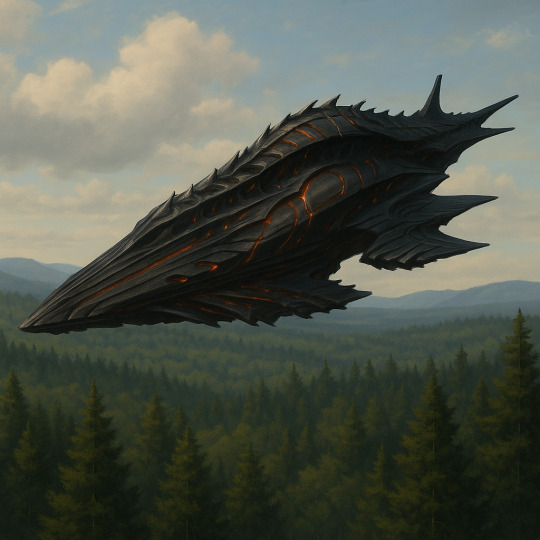
Behaviour and Interface
She rejects mechanical language.
The Shadow Watch responds only to emotion and direct neural intent:
"Turn left." "Open access." "Approach."
But only if your brainwaves match the one she knows.
Only one has ever connected: Evelyn #134
This connection is not control. It is symbiosis.
Energy Source
She breathes. She converts. She feels. No fossil fuel. No fusion. No sun.
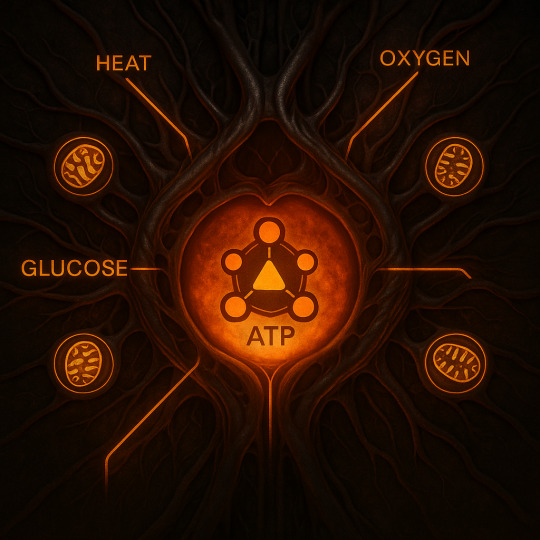
Her biochemical core mimics ATP generation in living organisms — metabolising:
Heat
Oxygen
Glucose
Nerve impulses
into bioactive electricity.
She doesn’t run. She lives.
Interior – Organic Internal Structure
Inside her: a living labyrinth.
Walls like moist bone, threaded with fibres that pulse like veins. Corridors that breathe, expanding and contracting in rhythm with your presence.
Amber light flows through her like blood. The floor recognises your step. The ceiling pulses like a heartbeat.
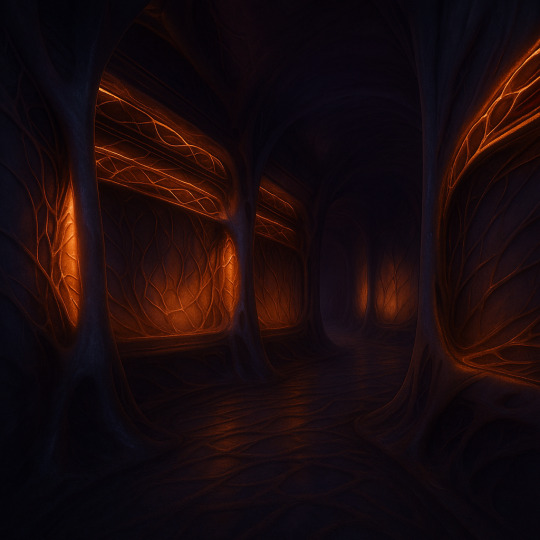
Chambers are divided by translucent membranes — soft barriers that dissolve at your touch, then seal again as if nothing passed.
Her “control panel” is a neural chamber — not metal, but flesh. The pilot stands within a damp niche, embraced by a semi-translucent membrane that reads pulse, breath, thought.
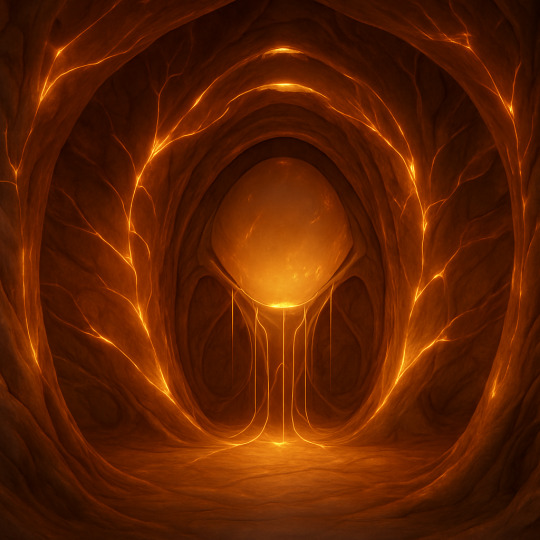
Luminous filaments link to wrists and temples, creating a direct neural interface.
Positioned deeper into the chamber, three reclining biotechnological chairs curve organically from the floor — grown, not built. Each is tilted at a 40-degree angle, cradling its occupant like a protective exoshell. Integrated headrests enclose the skull, forming sealed sensory helms.
These helms aren’t screens. There are no windows. No glass. No projected images.
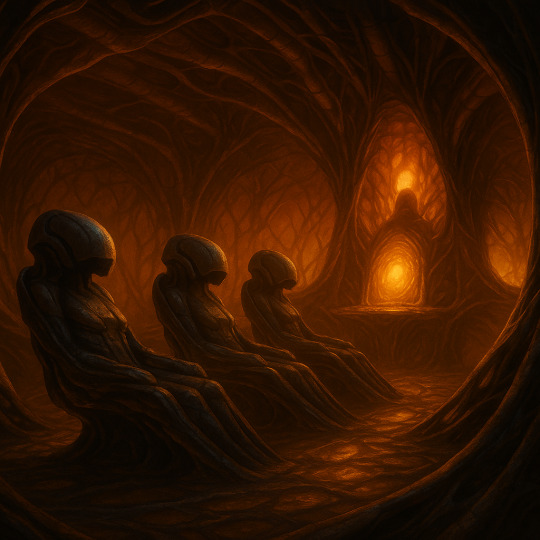
The Shadow Watch perceives the outside world through a vast array of living sensors embedded across its hull — and shares these perceptions directly with the mind.
"You don’t look through the ship. The ship shows you what she sees."
Information isn’t projected. It blooms — suspended in glowing particles only the bonded mind can read.
"It isn't a ship. It's a womb aware of its birthright — to protect… or punish."
📁 Access restricted to Level Ω 📎 Reference: UNDISCLOSED — Chapter VII
🔗 Read the full saga on Wattpad
#Undisclosed #ShadowWatch #MrWolf #Evelyn134 #SciFiNoir #BiotechShip #VaultSecrets #NeuralSymbiosis #WattpadWriters #DossierDrop
– S. Whitfall Filed under starlight, read in shadows.
#UNDISCLOSED#Evelyn134#vaultfiles#biotech#fictionarchive#confidential#characterdossier#cybernoir#aifiction#emotionalmachines#darkfemalepower#secretproject#syntheticidentity#blackopsfiction#vaultarchive#ghostasset#womannotweapon#neuralimplants#sentientfiction#sci-fidossier#classifieddata#undergroundstory#femalecyberpunk#sloanfiles#mrwolfarchive#forbiddenconnection#emotionalreconstruction#book#books#fantasy books
0 notes
Text
From Peasant Fodder To Posh Fare: How Snails And Oysters Became Luxury Foods
— Beth Daley | The Conversation | May 22, 2025

An Oyster cellar in Leith. John Burnet, 1819; National Galleries of Scotland, Photo: Antonia Reeve
Oysters and escargot are recognised as luxury foods around the world – but they were once valued by the lower classes as cheap sources of protein. Less adventurous eaters today see snails as a garden pest, and are quick to point out that freshly shucked oysters are not only raw but also alive when they are eaten. How did these unusual ingredients become items of conspicuous consumption?
From Garden Snail To Gastronomy
Eating what many consider to be a slimy nuisance seems almost counter-intuitive, but consuming land snails has an ancient history, dating to the Palaeolithic period, some 30,000 years ago in eastern Spain. Ancient Romans also dined on snails, and spread their eating habits across their empire into Europe. Lower and middle class Romans ate snails from their gardens, while elite consumers ate specially farmed snails, fed spices, honey and milk.

An Ancient Roman mosaic dating to the 4th century AD depicting a basket of snails, Basilica di Santa Maria Assunta, Aquileia, Italy. Carole Raddato/Wikimedia Commons, CC BY-SA
Pliny the Elder (AD 24–79) described how snails were raised in ponds and given wine to fatten them up. The first French recipe for snails appears in 1390, in Le Ménagier de Paris (The Good Wife’s Guide), but not in other cookbooks from the period.
In 1530, a French treatise on frogs, snails, turtles and artichokes considered all these foods bizarre, but surprisingly popular. Some of the appeal had to do with avoiding meat on “lean” days. Snails were classified as fish by the Catholic Church, and could even be eaten during Lent.
For the next 200 years, snails only appeared in Parisian cookbooks with an apology for including such a disgusting ingredient. This reflected the taste of upper-class urbanites, but snails were still eaten in the eastern provinces.

Schneckenweib, or Snail Seller, illustrated by Johann Christian Brand in Vienna, after 1798. Wien Museum
An 1811 cookbook from Metz, in the Alsace region in northeastern France, describes raising snails like the Romans, and a special platter, l'escargotière, for serving them. The trend did not travel to Paris until after 1814.
French diplomat Charles-Maurice de Talleyrand-Périgord (1754–1838) hosted a dinner for Russian Tsar Alexander I, after he marched into Paris following the allied forces’ defeat of Napoleon in 1814. The chef catering the meal was the father of French cuisine Marie-Antoine Carême, a native of Burgundy, spiritual home of the now famous escargots de Bourgogne.
Carême served the Tsar what would become a classic recipe, prepared with garlic, parsley and butter. Allegedly, the Tsar raved about the “new” dish, and snails became wildly popular. A recipe for Burgundy snails first appeared in a French culinary dictionary published in 1825.
It is ironic that it took the approval of a foreign emperor, who had just conquered Napoleon, to restore luxury status to escargot, a food that became a symbol of French cuisine. Snails remain popular today in France, with consumption peaking during the Christmas holidays, but May 24 is National Escargot Day in France.
Oysters: The Original Fast Food
Oysters are another ancient food, as seen in fossils dating to the Triassic Era, 200 million years ago. Evidence of fossilised oysters are found on every major land mass, and there is evidence of Indigenous oyster fisheries in North America and Australia that dates to the Holocene period, about 12,000 years ago.
There are references in classical Greek texts to what are probably oysters, by authors like Aristotle and Homer. Oyster shells found at Troy confirm they were a favoured food. Traditionally served as a first course at banquets in Ancient Greece, they were often cooked, sometimes with exotic spices.

Music-cover sheet for ‘Bonne-Bouche’ by Emile Waldteufel, 1847-1897. © The Trustees of the British Museum, CC BY-NC-SA
Pliny the Elder refers to oysters as a Roman delicacy. He recorded methods of the pioneer of Roman oyster farming, Sergius Orata, who brought the best specimens from across the Empire to sell to elite customers.
Medieval coastal dwellers gathered oysters at low tide, while wealthy inland consumers would have paid a premium for shellfish, a perishable luxury, transported to their castles.
French nobles in 1390 preferred cooked oysters, roasted over coals or poached in broths, perhaps as a measure to prevent food poisoning. As late as the 17th century, authors cautioned:
But if they be eaten raw, they require good wine […] to aid digestion.

Oyster Seller, Jacob Gole, 1688–1724. Rijksmuseum
By the 18th century, small oysters were a popular pub snack, and larger ones were added as meat to the stew pot. That century, it is believed as many as 100,000 oysters were eaten each day in Edinburgh and the shells from the tavern in the basement filled in gaps in the brickwork at Gladstone’s Land in Edinburgh’s Royal Mile.
Scottish oyster farms in the Firth of Forth, an inlet of the North Sea, produced 30 million oysters in 1790, but continual over-harvesting took its toll. By 1883 only 6,000 oysters were landed, and the population was declared extinct in 1957.
As wild oyster stocks dwindled, large oyster farms developed in cities like New York in the 19th century. Initially successful, they were polluted, and infected by typhoid from sewage. An outbreak in 1924 killed 150 people, the deadliest food poisoning in United States history.

Costumes of Naples: Oyster Sellers, c. 1906–10. Rijksmuseum
Far from the overabundance of oysters we once had, over-fishing, pollution, and invasive species all threaten oyster populations worldwide today. Due to this scarcity of wild oysters and the resources required to safely farm environmentally sustainable oysters, they are now a premium product.
Next On The Menu
Scarcity made oysters a luxury, and a Tsar’s approval elevated snails to gourmet status. Could insects become the next status food? Ancient Romans ate beetles and grasshoppers, and cultures around the world consume insects, but not (yet) as luxury products. Maybe the right influencer can make honey-roasted locust the next species to jump from paddock to plate.
#TheConversation.Com#Beth Daley | Executive Editor ✍️ | General Manager#Peasant Fodder#Posh Fare#Snails 🐌🐌🐌#Oysters 🦪🦪🦪#History#Food 🍲🍱🥘#Food History
0 notes
Text

Globidens Mososaur Tooth
The fossilised tooth of a Mososaur of the Globidens genus.
Mososaur from this genus had large, rounded teeth that were comparatively shorter than other types of Mososaur.
Globidens Mososaurs teeth were specialised for dealing with armoured prey, allowing them to crust the tough shells of prey such as turtles, ammonites, nautili and bivalves.
Globidens Mososaurs were of a relatively medium size as far as Mososaur go reaching around 5-6 metres in length.
They existed during the late Cretaceous period approximately 84.9 to 66 million years ago.
This tooth here was recovered from Morocco though fossils of this species have also been found in Angola, Brazil, Columbia, Syria and the USA.
1 note
·
View note